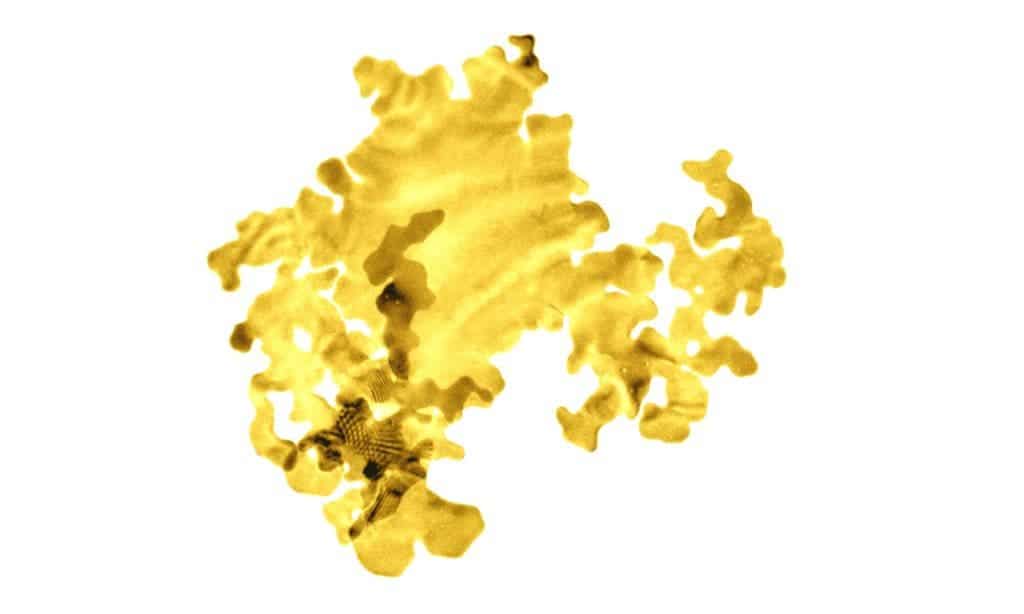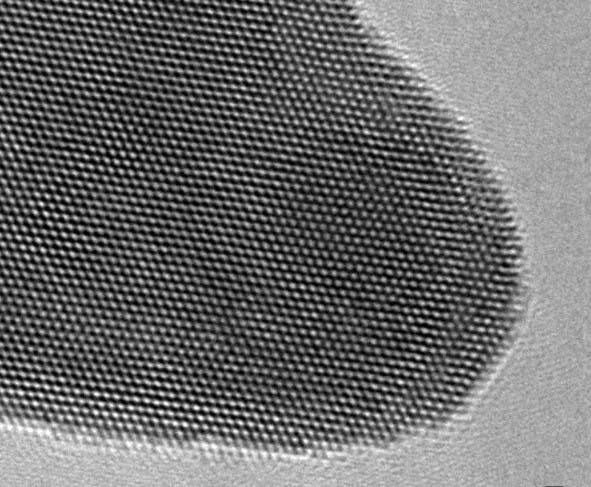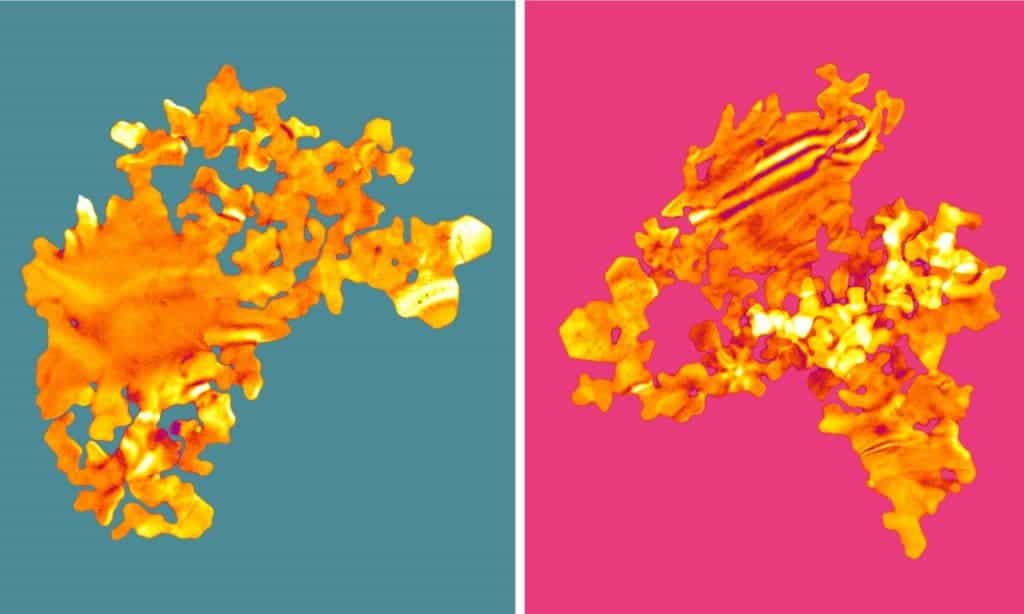Researchers at the University of Leeds have created the thinnest unsupported gold plate ever — just two atoms thick.

Image credits University of Leeds.
The team reports that the thickness of their gold plate is just 0.47 nanometres, making it one million times thinner than a human fingernail. For comparison, the thickness of a human strand of hair ranges between 17 to 181 nanometres. The researchers call the plate ‘2-D’ gold because it’s just two-atoms thick.
Nanometals
“This work amounts to a landmark achievement,” says lead author Dr. Sunjie Ye, from Leeds’ Molecular and Nanoscale Physics Group and the Leeds Institute of Medical Research.
“Not only does it open up the possibility that gold can be used more efficiently in existing technologies, it is providing a route which would allow material scientists to develop other 2-D metals. This method could innovate nanomaterial manufacturing.”
As the plate is built from only two layers of atoms, all of them are surface atoms, i.e. none of them are completely covered by others. This is especially important for catalysts, whose efficiency varies with the amount of surface area they can present to the environment.

Image credits University of Leeds.
Laboratory tests show that the 2-D gold plate is 10 times more efficient as a catalytic substrate than the currently used gold nanoparticles. These gold nanoparticles are 3-D materials and the majority of their atoms reside in their bulk rather than on the surface, so they are inactive.
In addition to pointing the way towards new, better catalysts for a range of industrial processes, the material could also have applications in the medical device and electronics industries. The team writes that it can also form the basis of artificial enzymes that could be applied in rapid, point-of-care medical diagnostic tests and in water purification systems.
The team’s synthesis process takes place in a watered-down solution of chloroauric acid, an inorganic substance that contains gold. This substance is then reduced to produce metallic gold using a ‘confinement agent,’ a chemical that encourages the gold to form as a very thin sheet.
Because at this point the gold particles are still in the nanoscale, it appears green in the water. Also due to the resulting shapes, the team describes it as ‘gold nanoseaweed’.

Professor Stephen Evans, head of the Leeds’ Molecular and Nanoscale Research Group and lead researcher on the project, says that the findings could help several industries cut down on production costs due to the high surface-to-volume ratios of the 2-D gold sheets.
“Gold is a highly effective catalyst. Because the nanosheets are so thin, just about every gold atom plays a part in the catalysis. It means the process is highly efficient,” says Professor Evans.
“Our data suggests that industry could get the same effect from using a smaller amount of gold, and this has economic advantages when you are talking about a precious metal.”
Furthermore, the sheets are also flexible despite their extreme thinness. This makes them ideal for a variety of applications in electronics, especially in the building of components, bendable screens, electronic inks, or transparent conducting displays.
Professor Evans says there are many similarities between the 2-D gold and graphene, the first 2-d material ever created in the lab. However, he also cautions that the transition from new materials to working products takes a long time, and that “you can’t force it to do everything you might like to”.
“With graphene, people have thought that it could be good for electronics or for transparent coatings — or as carbon nanotubes that could make an elevator to take us into space because of its super strength,” he explains. “I think with 2-D gold we have got some very definite ideas about where it could be used, particularly in catalytic reactions and enzymatic reactions.”
“We know it will be more effective than existing technologies, so we have something that we believe people will be interested in developing with us.”
The paper “Sub‐Nanometer Thick Gold Nanosheets as Highly Efficient Catalysts” has been published in the journal Advanced Science.






